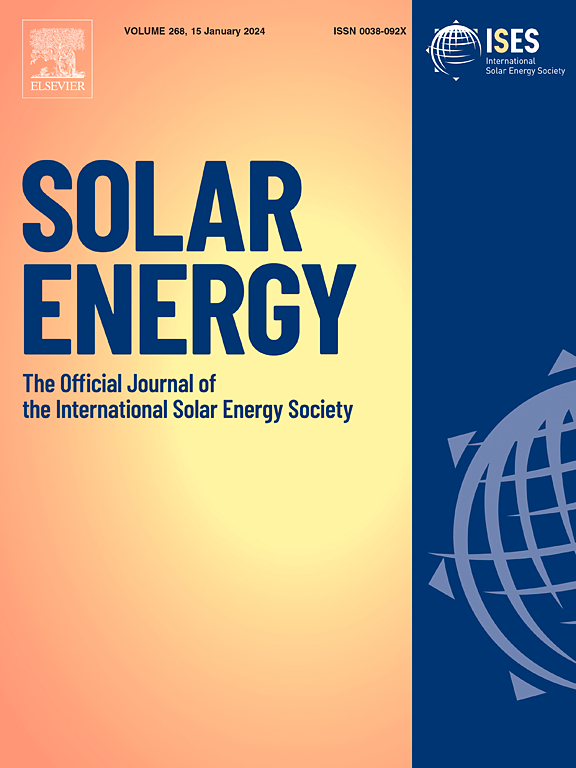实际野外遮阳条件下背接触光伏组件输出功率性能分析:与TOPCon光伏组件比较
IF 6
2区 工程技术
Q2 ENERGY & FUELS
引用次数: 0
摘要
后接触(BC)太阳能电池由于其后表面的交叉PN结设计而具有低反向偏置特性。目前的文献和市场认知表明,在部分遮阳下,BC模块比前接触模块(如TOPCon)具有功率输出优势,因为BC电池的后PN结可以进行软击穿传导。然而,我们的研究系统地调查了这一结论的适用性,并发现BC模块在遮阳场景中的输出性能优势仅限于特定条件。通过模拟实际的野外遮阳条件(单格遮阳、短边行遮阳和长边行遮阳)的对比实验,我们发现BC模块只有在子串中遮阳的单元格少于三个时才优于TOPCon模块。从理论上讲,BC电池的击穿电压(- 5V)与旁路二极管在子串(- 15v)中激活所需的负偏置条件之间的关系支持了这一点。在大型地面电站常见的短边和长边排遮阳情况下,两者的输出性能趋于一致。本研究建立了实际遮阳条件下BC模块输出功率特性的边界条件,为工程设计和市场投资提供关键参考。本文章由计算机程序翻译,如有差异,请以英文原文为准。
Power output performance analysis of back-contact photovoltaic module under actual field shading conditions: A comparison with TOPCon photovoltaic module
Back-contact (BC) solar cells exhibit low reverse bias characteristics due to their interdigitated PN junction design on the rear surface. Current literature and market perception suggest that BC modules have a power output advantage over front-contact modules (such as TOPCon) under partial shading, as the rear PN junctions of BC cells can undergo soft breakdown conduction. However, our study systematically investigates the applicability of this conclusion and finds that the output performance advantage of BC modules in shading scenarios is limited to specific conditions. Through comparative experiments simulating actual field shading conditions (single-cell shading, short-side row shading, and long-side row shading), we found that BC modules outperform TOPCon modules only when fewer than three cells in a substring are shaded. This is theoretically supported by the relationship between the breakdown voltage of BC cells (−5V) and the negative bias condition required for bypass diode activation in a substring (−15 V). In the case of short-side and long-side row shading commonly seen in large ground-mounted power stations, the output performance of the two tends to be consistent. This study establishes boundary conditions for the power output characteristics of BC modules under actual shading conditions, providing key references for engineering design and market investment.
求助全文
通过发布文献求助,成功后即可免费获取论文全文。
去求助
来源期刊

Solar Energy
工程技术-能源与燃料
CiteScore
13.90
自引率
9.00%
发文量
0
审稿时长
47 days
期刊介绍:
Solar Energy welcomes manuscripts presenting information not previously published in journals on any aspect of solar energy research, development, application, measurement or policy. The term "solar energy" in this context includes the indirect uses such as wind energy and biomass
 求助内容:
求助内容: 应助结果提醒方式:
应助结果提醒方式:


